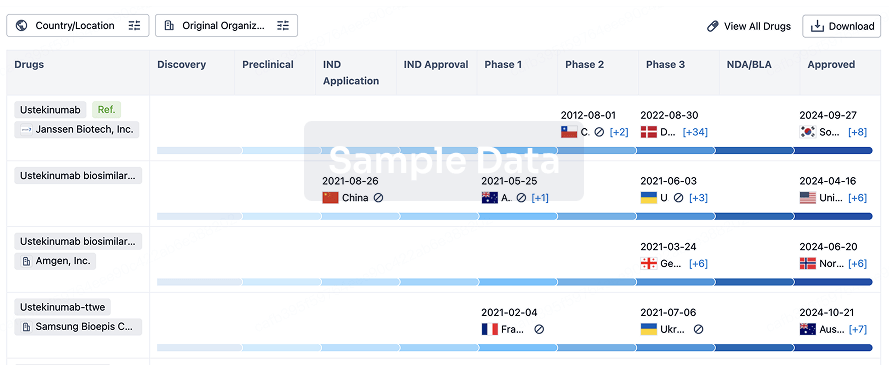The partnership includes an exclusive license and joint development agreement in which RheumaGen will leverage SiVEC's BactPac™ drug delivery platform to streamline manufacturing and increase scalability of RheumaGen's new class of HLA gene-editing therapies; importantly, the partnership provides for co-development of an in vivo program
Richard Freed, CEO & Co-Founder of RheumaGen, has been appointed to SiVEC's Board of Directors
RheumaGen's lead program, RG0401, is in development as a one-time, curative therapy for patients with treatment-resistant or refractory rheumatoid arthritis, who currently have no effective treatments
AURORA, Colo. and FORT COLLINS, Colo., Oct. 7, 2025 /PRNewswire/ -- RheumaGen, Inc. and SiVEC Biotechnologies, Inc. today announced a licensing and joint development agreement for a breakthrough class of gene-editing therapies designed to cure autoimmune diseases. The partnership will utilize SiVEC's BactPac™ drug delivery platform to streamline manufacturing and increase scalability of RheumaGen's new class of human leukocyte antigen (HLA) gene-editing therapies for common autoimmune diseases; importantly, the partnership also establishes an in vivo program that will be co-developed by the companies.
RheumaGen and SiVEC are part of the next wave of cell and gene therapy companies systematically solving for the industry's challenges, such as commercialization, manufacturing, and patient accessibility. The CGT industry, while continuing to advance groundbreaking science and therapies, has struggled with the cost and complexity of commercializing its treatments for patients. This partnership combines the groundbreaking innovations of both Colorado-based companies to develop cost-effective, scalable, and ultimately accessible therapies for millions of patients and their families.
"We are thrilled to be partnering with such an exceptional and scientifically rigorous company like SiVEC. From the start, both personally and professionally, we have always been focused on the patients, and not only on developing curative therapies, but also ensuring that our curative therapies reach the patients," said Richard Freed, CEO & Co-Founder of RheumaGen. "We have made great strides to date, and this partnership with SiVEC is a major step forward in realizing that vision."
"We are equally excited for the opportunity to partner with RheumaGen," added Lyndsey Linke, CEO & Co-Founder of SiVEC. "After years of developing and refining our BactPac drug delivery platform, this collaboration expands its potential into an exciting and rapidly growing area of application. With two companies whose missions and values are so well aligned, we believe this partnership has the power to drive meaningful progress for patients."
RheumaGen is advancing a pipeline of treatments to cure common autoimmune diseases in which HLA alleles play a critical epidemiological role, including development programs for rheumatoid arthritis (RA), multiple sclerosis, type 1 diabetes, celiac disease, and ankylosing spondylitis. RheumaGen has identified a nearly universal gene-editing target shared by close to all its potential autoimmune indications, offering powerful development, regulatory, and commercial advantages for its therapies.
RheumaGen's lead development candidate, RG0401, targets 10-20% of RA patients who are refractory or treatment-resistant and suffer substantial unmet need. The Company is currently conducting RG0401 IND-enabling studies and plans to begin the Phase I clinical trial in 2027. RG0401 aims to cure refractory RA by treating its HLA source. With a single precision edit to a DNA marker of the HLA gene, RG0401 substantially quiets only one of a patient's HLA alleles while leaving a healthy immune system intact. The therapy is designed to selectively prevent T cells from activating chronic autoimmune responses without broad immunosuppression, thereby halting not only cell and tissue degradation but also the entire disease process with this approach.
SiVEC is pioneering first-in-class therapies driven by its groundbreaking BactPac drug delivery platform designed to target specific tissues and efficiently deliver complex payloads. BactPac represents a powerful new approach for overcoming the challenges that have limited gene-editing therapies by leveraging engineered bacteria to produce and deliver biologics and gene therapies with unparallelled precision and safety that surpass traditional delivery methods, including viral, lipid nanoparticle, and exosome systems. BactPac is a non-immunogenic, non-replicating, and non-integrative bacterial vehicle that can produce and deliver the entire gene-editing cargo with a simplified and cost-effective manufacturing system.
"Colorado BioScience Association applauds this new partnership between RheumaGen and SiVEC Biotechnologies, which reflects the strength of Colorado's life sciences ecosystem and our state's leadership in transformative cell and gene therapies for patients," said Elyse Blazevich, President & CEO of Colorado BioScience Association (CBSA). "Colorado is right sized for collaboration, and we are proud RheumaGen and SiVEC connected at our Rocky Mountain Life Sciences Investor and Partnering Conference."
About RheumaGen, Inc.
RheumaGen is a private biotechnology company engineering a new class of therapeutics to cure common autoimmune diseases. RheumaGen focuses on editing the human leukocyte antigen (HLA), or "immune gene," to develop one-time, curative cell and gene therapies. RheumaGen is headquartered in Aurora, Colorado, and partners with ClinImmune Cell & Gene Therapy at the University of Colorado Anschutz Medical Campus for clinical development and manufacturing. For more information, please visit rheumagen.com or follow the Company on LinkedIn.
About SiVEC Biotechnologies, Inc.
SiVEC Biotech is advancing first-in-class therapies by harnessing their groundbreaking BactPac™ drug delivery platform. BactPac uses the power of engineered bacteria to overcome the biggest hurdles in developing and commercializing biologics, achieving safe, targeted delivery with the added advantage of simple, scalable manufacturing. BactPac delivers a diverse array of biologics, including mRNA, siRNA, proteins, and CRISPR gene editors, with precision and safety that surpass traditional delivery methods. SiVEC's lead therapeutic, SVC-KRAb™, leverages BactPac as a pan-RAS biologic for cancer. By potently targeting a broad spectrum of RAS mutations, SVC-KRAb offers new hope to a wide patient population. SiVEC is headquartered in Fort Collins, Colorado. For more information, please visit sivecbiotechnologies.com.
SOURCE RheumaGen, Inc.
WANT YOUR COMPANY'S NEWS FEATURED ON PRNEWSWIRE.COM?
440k+
Newsrooms &
Influencers
9k+
Digital Media
Outlets
270k+
Journalists
Opted In
GET STARTED







